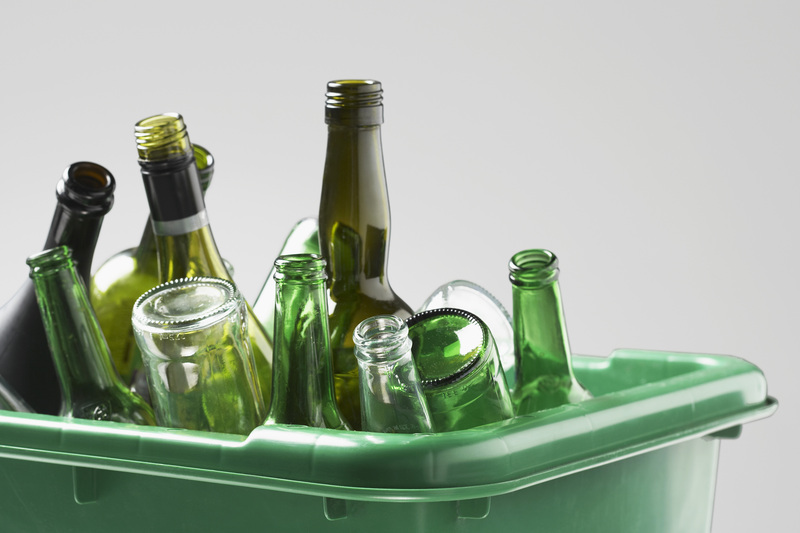Rethinking Plastics: Can We Stop Microplastic Spread?
Microplastics pollution has become one of the most urgent environmental problems of our time, calling for innovative solutions and a global reimagining of our relationship with plastics. In this comprehensive article, we explore what microplastics are, their far-reaching impacts, and effective strategies and technologies for mitigating their spread. Can we truly halt the microplastics crisis?
Understanding Microplastics: What Are They and Why the Concern?
Microplastics are tiny plastic particles measuring less than 5 millimeters in diameter. These minuscule pollutants originate from a multitude of sources: broken-down larger plastics, microbeads in cosmetics, synthetic fibers shed from clothing, and even tire wear from vehicles. The pervasiveness, persistence, and potential health hazards of microplastics have raised alarms among scientists and environmentalists worldwide.
- Primary microplastics: Manufactured at a small size, such as microbeads in personal care products.
- Secondary microplastics: Result from the fragmentation of larger plastic debris due to sunlight, wave action, or other environmental factors.
Microplastic pollution is not confined to oceans. Recent studies have found them in the most remote parts of the planet--from the Arctic snow to the deep Mariana Trench, drinking water, and even inside our bodies.
Why Are Microplastics an Environmental Emergency?
The spread of microplastics poses threats at multiple levels:
- Disruption to aquatic ecosystems: Marine life can ingest these particles, causing physical harm and transferring toxins up the food chain.
- Soil contamination: Microplastics can influence soil health, impacting crop growth and water retention.
- Potential health risks to humans: The consequences of human microplastic ingestion are still being studied, but concerns include immune system disruption and chemical exposure.

The Pathways: How Do Microplastics Spread?
The spread of microplastics is both direct and indirect, making containment particularly challenging:
- Runoff and Stormwater: Rain and river flows carry plastic debris from land to sea, breaking down into microplastics over time.
- Atmospheric Transport: Tiny fibers from synthetic clothing and tire dust can become airborne, traveling vast distances before being deposited via rain or wind.
- Wastewater Treatment Plants: These facilities are not fully effective at trapping microplastics, allowing many particles to enter aquatic environments.
- Everyday Household Activities: Laundry, dishwashing, and cosmetic use release microplastics directly into water systems.
Can We Stop Microplastic Spread? Strategies and Solutions
Is it possible to halt microplastic pollution? While eradicating microplastics entirely may seem daunting, significant progress can be made by integrating multiple approaches. Here, we explore some of the leading solutions for curbing microplastic dissemination in our environments.
1. Innovating in Plastic Alternatives
One crucial step in rethinking plastics is the development of biodegradable and compostable materials as substitutes for traditional petroleum-based plastics.
- Bioplastics: Derived from renewable resources (such as corn starch, sugarcane, or cellulose), these materials can break down more readily in natural environments.
- Edible Packaging: Researchers are exploring edible films for food packaging, which could reduce waste and microplastics.
- Limitations: Not all bioplastics decompose fully under natural conditions--proper management infrastructure is crucial.
2. Upgrading Wastewater Treatment and Filtration
Wastewater treatment plants are often the last line of defense before plastics enter waterways.
- Advanced filtration technologies, such as membrane bioreactors, can capture smaller particles more effectively.
- Add-on filters: Retrofitting washing machines with microplastic filters can significantly reduce fiber pollution from laundry.
- Upgraded sewage treatment: Communities investing in improved filtration are seeing immediate reductions in microplastics output.
3. Legislative Measures and Producer Responsibility
Governments worldwide are introducing bans and regulations to stem the tide of microplastics.
- Microbead Bans: Many countries have outlawed microbeads in personal care products.
- Extended Producer Responsibility (EPR): Policies that hold manufacturers accountable for the full lifecycle of their plastic products--including recovery and recycling.
- Mandatory labeling of plastic content in products can drive consumer awareness and better choices.
4. Transforming Consumer Behavior
Every individual holds the power to limit microplastic release by making informed choices:
- Reduce single-use plastics--opt for reusable bags, bottles, and packaging.
- Choose natural fibers--cotton, hemp, and wool instead of synthetic textiles.
- Support companies and brands committed to sustainable packaging and plastic reduction.
5. Cleanup Innovations and Environmental Restoration
Removing existing microplastics from the environment is another front in this battle:
- Ocean clean-up technologies: Advanced trawling devices can capture plastic debris and filter microplastics from large water bodies.
- Bioremediation: Some organisms naturally break down plastics--research into plastic-eating bacteria and fungi is ongoing.
- Wetland restoration: Healthy wetland ecosystems can trap and filter out microplastics from water sources.
The Role of Scientific Research and Innovation
Ongoing research is crucial for understanding the full scope of microplastic pollution and developing novel solutions:
- Detection technologies: Scientists are improving methods to monitor microplastics in air, water, and food.
- Toxicology studies seek to understand health impacts on humans and animals.
- Material science: Developing "greener" plastics that either biodegrade quickly or are less likely to fragment into microplastics.
Case Study: Amsterdam's "Plastic-Free Rivers" Initiative
The city of Amsterdam launched floating barriers in local rivers to collect plastic waste before it enters the sea. These structures are low-impact, allowing fish to pass while capturing debris and microplastics, demonstrating how urban innovation can intercept pollution at the source.
International Collaboration: A Unified Effort Is Essential
The global nature of microplastic pollution demands international cooperation and policies. Many organizations and governments are working towards:
- UN Plastics Treaty: Ongoing United Nations negotiations aim to create a legally binding agreement on plastic pollution.
- Joint scientific research across countries enhances data sharing and informs best practices worldwide.
- Global awareness campaigns educate and rally the public behind microplastics mitigation efforts.

Emerging Technologies: The Future of Microplastics Control
Technological advancements offer hope for controlling and eventually reducing the spread of microplastics:
- Artificial intelligence (AI) and robotics: Automated systems detect, track, and remove microplastics from aquatic environments with increasing precision.
- Enzymatic breakdown: Scientists have engineered enzymes that can accelerate plastics decomposition into benign components.
- Smart filtration: Nanofiber filters in water treatment plants can trap even nano-sized plastics, preventing their escape.
Conclusion: A New Relationship with Plastics
Rethinking plastics means more than replacing one material for another--it requires a fundamental shift in production, consumption, and waste management patterns. While stopping microplastic spread completely will require ongoing effort, each improvement brings us closer to a healthier, more sustainable planet.
What can you do today to take part in this change?
- Reduce your plastic usage and advocate for better alternatives.
- Participate in recycling programs and push for local policies limiting microplastics.
- Stay informed about new findings, and educate others about the impact of microplastics.
The spread of microplastics is not an irreversible fate--by embracing innovation, responsible production, and active stewardship, we can stem the tide and protect the vitality of our natural world. Let's rethink plastics and envision a cleaner, microplastic-free future together.
```